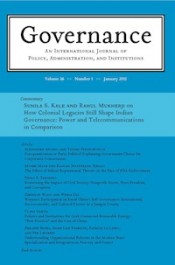Why do governments adopt regulatory impact assessment?
Regulatory impact assessment (RIA) is a kind of “meta-regulation,” says Claudio Radaelli, a technique for guiding the rule-making activity of the state. But why do governments adopt RIA? His cross-national study in the current issue of Governance (23.1) examines the hypothesis that RIA is mainly a tool for tightening political control over the bureaucracy. Radaelli finds strong support for the hypothesis in the United States and United Kingdom, less support in Canada and the Netherlands, and little in Denmark or Sweden. The European Union, meanwhile, constitutes a more complex case for interpreting the role of RIA. Read more: Regulating Rule-Making via Impact Assessment.
